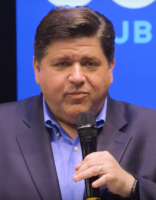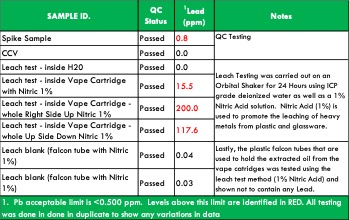Editor’s Note: The following is based on research and studies performed in their Santa Cruz Lab, with contributions from Mikhail Gadomski, Lab Manager, Ryan Maus, Technical Services Analyst, Dr. Laurie Post, Director of Food Safety & Compliance, Andy Sechler, Lab Director, Toby Astill, Senior Business Development Leader at Perkin Elmer and Charles Deibel, President of Deibel Cannabis Labs.
Pesticides represent the leading cause of batch failures in the cannabis industry. They are also the hardest tests to run in the laboratory, even one equipped with state-of-the-art equipment. The best instruments on the market are HPLC and GC dual mass spectrometer detectors, called “HPLC-qqq”, “GC-qqq,” or just triple quads.
 As non-lab people, we envision a laboratory that can take a cannabis sample, inject it into a triple quad and have the machine quickly and effortlessly print out a report of pesticide values. Unfortunately, this is far from reality. The process is much more hands on and complex.In the current chemistry lab, trained analysts have to first program the triple quads to look for the pesticides of concern; in cannabis pesticide testing, this is done by programming the first of two mass spectrometers to identify a single (precursor) mass that is characteristic of the pesticide in question. For BCC requirements in California, this has to be done for all 66 pesticides, one at a time.
As non-lab people, we envision a laboratory that can take a cannabis sample, inject it into a triple quad and have the machine quickly and effortlessly print out a report of pesticide values. Unfortunately, this is far from reality. The process is much more hands on and complex.In the current chemistry lab, trained analysts have to first program the triple quads to look for the pesticides of concern; in cannabis pesticide testing, this is done by programming the first of two mass spectrometers to identify a single (precursor) mass that is characteristic of the pesticide in question. For BCC requirements in California, this has to be done for all 66 pesticides, one at a time.
Next, these precursor ions are degraded into secondary chemicals called the “product” ions, also called transition ions. The second of the two mass spectrometers is used to analyze these transition ions. This process is graphed and the resulting spectrum is analyzed by trained chemists in the lab, pesticide by pesticide, for all the samples processed that day. If the lab analyzes 10 samples, that translates to 660 spectra to analyze (66 pesticides x 10 samples). When looking at the spectra for each pesticide, the analysts must compare the ratios of the precursor ions to the product ions.
Confirmation Testing
If these spectra indicate a given pesticide may be present, the chemists must then compare the ratios between the precursor and the products. If these ratios are not what is expected, then the analyst must perform confirmation testing to prove the precursor mass either is or is not the pesticide of concern. If the ratios are not what is expected, it means the molecule is similar to the pesticide in question, but may not be that pesticide. This confirmatory testing is key to producing accurate results and not failing batches when dealing with closely related chemicals. This process of analyzing spectra is done in all labs that are performing pesticide testing. In this fledgling industry, there are few published cannabis pesticide methods.
The need for this type of confirmation testing doesn’t happen all of the time, but when it does, it will take longer than our targeted three-day turn-around time. In the picture above, one precursor mass is ionized into several product masses; but only two are large enough to be used for comparison. In this hypothetical situation, two product masses are produced for every one precursor, the expected ion abundance ratio should be less than 30%. When performing any confirmatory testing, if the ion abundance ratio is >30%, it means the original precursor molecule was not the pesticide of concern. For example, if the ion abundance ratio was 50%, then the original molecule broke down into too many parts; it was not the pesticide we were looking for. This ion abundance ratio threshold was established by FANCO, the international organization that sets guidelines for all pesticide testing.
Testing Strategies
Methodology: In this fledgling industry, there are few published cannabis pesticide methods. The identification of the precursor mass and product ions are not always published, leaving labs to research which ions should be used. This adds to the potential for differences between lab results. Once selected, labs should validate their research, through a series of experiments to ensure the correct precursor and transition (product) ions are being used in the method.
Sample Preparation: Beyond the time-consuming work that is required to develop sound pesticide methods, the extraction step is absolutely critical for credible results. If the pesticides aren’t fully extracted from the cannabis product, then the results will be lower than expected. Sample preparations are often not standardized between labs, so unless a given extraction technique is validated for accuracy, there is the possibility for differences between labs.
Getting a Representative Sample
The current California recommended amount of sample is one gram of product per batch. Batch sizes can vary greatly and it is entirely likely that two different one gram samples can have two different results for pesticides. Has the entire plant been evenly coated with exactly the same amount of pesticide onto every square inch of its leaves? No, probably not. That is why it is imperative to take a “random” sample, by taking several smaller samples from different areas of the entire batch.
Sampling Plans: We can learn a lot from the manufacturing and sampling best practices developed by the food industry through the years. If a food manufacturer is concerned with the possibility of having a bacteria pathogen, like Salmonella, in their finished product, they test the samples coming off their production lines at a statistically relevant level. This practice (theory) is called the sampling plan and it can easily be adapted to the cannabis industry. The basic premise is that the more you test, the higher your likelihood of catching a contaminate. Envision a rectangular swimming pool, but instead of water, it’s filled with jello. In this gelatinous small pool, 100 pennies are suspended at varying levels. The pennies represent the contaminates.
Is the pool homogenized? Is jello evenly represented in the entire pool? Yes. 
Is your concentrate evenly distributed in the extraction vessel? Yes. The question is, where are the pennies in that extraction vessel? The heavy metals, the microbial impurities and the pesticides should be evenly distributed in the extraction vessel but they may not be evenly represented in each sample that is collected. Unfortunately, this is the bane of the manufacturing industry and it’s the unfortunate reality in the food industry. If you take one random cup of jello, will you find the penny? Probably not. But it you take numerous 1 cup samples from random areas within the batch, you increase your chances of finding the contaminate. This is the best approach for sampling any cannabis product.
The best way to approve a batch of cannabis product is to take several random samples and composite them. But you may need to run several samples from this composite to truly understand what is in the batch. In the swimming pool example, if you take one teaspoon scoop, will you find one of the pennies? The best way to find one of the pennies is to take numerous random samples, composite them and increase the number of tests you perform at the lab. This should be done on any new vendor/cultivator you work with, in order to help establish the safety of the product.


































